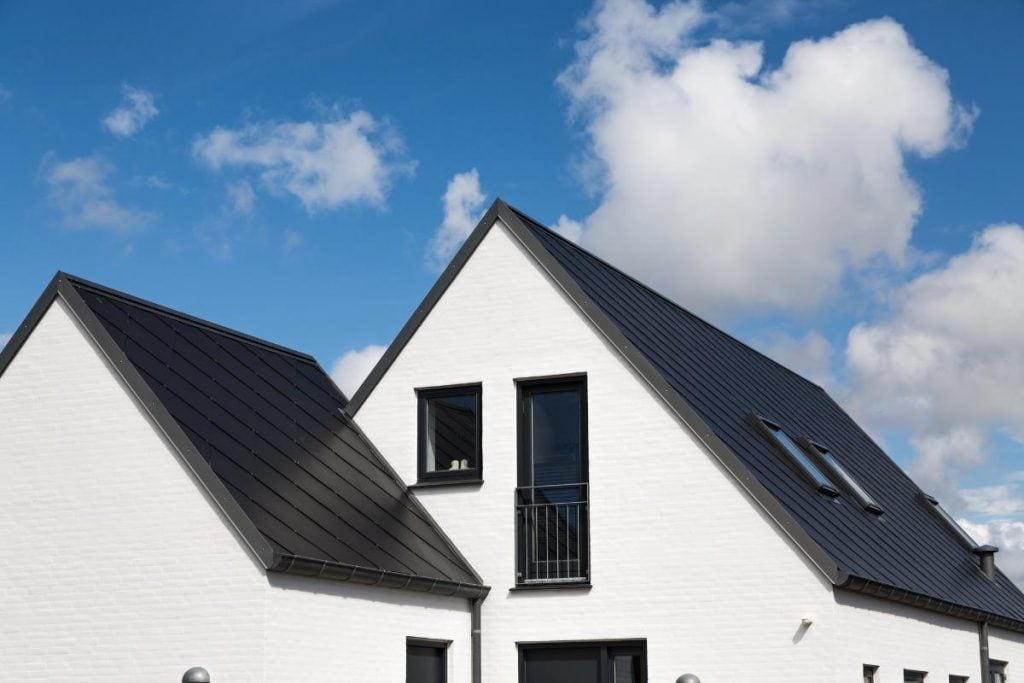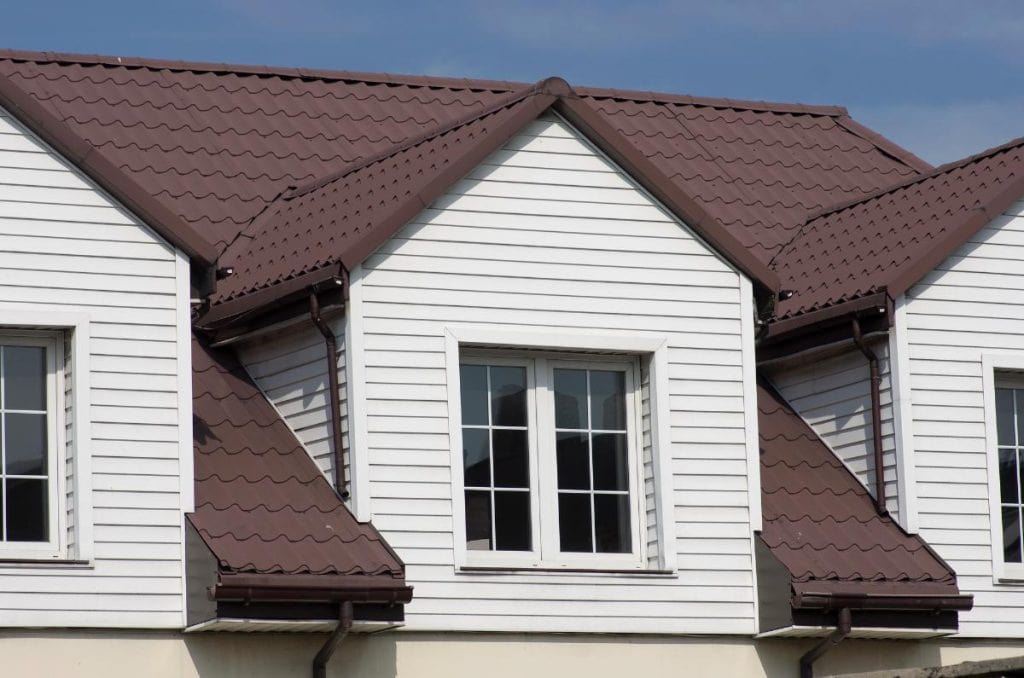When planning a roofing project, homeowners and contractors often focus on materials, aesthetics, and budgets. However, one crucial aspect that significantly influences both installation techniques and costs is roof pitch. Roof pitch, or the slope of a roof, determines not only the look of your home but also the type of materials you can use and the complexity of the installation process. Understanding roof pitch can help you make informed decisions and avoid costly mistakes.
For homeowners in areas like Long Island, where varying weather conditions demand durable roofing systems, roof pitch plays an even more significant role. Whether you’re consulting professionals at Long Island Roofs or exploring options on your own, understanding this concept is key to achieving a long-lasting and cost-effective roof.

What Is Roof Pitch?
Roof pitch refers to the steepness or angle of a roof and is typically expressed as a ratio. For example, a roof pitch of 4:12 means that the roof rises 4 inches for every 12 inches of horizontal distance. This measurement helps determine how water, snow, and debris will shed from your roof, impacting the design, materials, and maintenance.
How to Measure Roof Pitch
To measure roof pitch:
- Place a level horizontally on the roof surface.
- Measure the vertical distance from the end of the level to the roof surface at a 12-inch mark.
- The result is your roof’s pitch ratio (e.g., 4:12, 6:12).
Roof pitch can range from flat (0:12) to very steep (12:12 or higher). Knowing your roof’s pitch is essential for determining the type of materials suitable for your roof and the methods needed for installation.
Why Roof Pitch Matters
The pitch of a roof affects nearly every aspect of its construction, from the choice of materials to the labor involved. Here’s why roof pitch is so important:
1. Water and Snow Drainage
Roofs with a steep pitch are better at shedding water and snow, reducing the risk of leaks or damage caused by pooling water. Flat or low-pitched roofs, on the other hand, require specialized drainage systems and materials to handle water effectively.
2. Material Compatibility
Certain materials are better suited for specific pitches. For example:
- Asphalt Shingles: Commonly used on moderate to steep pitches.
- Metal Roofing: Versatile for low to steep pitches.
- Built-Up Roofs (BUR): Ideal for flat or very low-pitched roofs.
Choosing the wrong material for your roof’s pitch can lead to performance issues and additional maintenance costs.
3. Installation Complexity
Steeper roofs require more safety precautions and specialized equipment during installation. This adds time and labor costs to the project. Conversely, flat roofs often involve less labor-intensive installations but require expertise in waterproofing.
Roof Pitch Categories and Their Characteristics
Roof pitches generally fall into three categories: low, medium, and steep. Each has distinct advantages and challenges.
1. Low-Pitched Roofs
- Slope Range: 0:12 to 3:12
- Common Uses: Commercial buildings, modern homes
- Advantages: Easier to walk on and maintain; often cost-effective.
- Challenges: Prone to water pooling, requiring advanced waterproofing techniques.
2. Medium-Pitched Roofs
- Slope Range: 4:12 to 6:12
- Common Uses: Residential homes, traditional architecture
- Advantages: Good drainage capabilities; accommodates a wide range of materials.
- Challenges: Moderate installation difficulty compared to low or steep pitches.
3. Steep-Pitched Roofs
- Slope Range: 7:12 and above
- Common Uses: Homes in areas with heavy snowfall or rain.
- Advantages: Excellent water and snow shedding; attractive aesthetic.
- Challenges: Higher labor costs due to safety precautions and equipment needs.
How Roof Pitch Influences Costs
Roof pitch is a significant factor in determining the overall cost of a roofing project. Here’s how it impacts expenses:
1. Labor Costs
The steeper the roof, the more challenging and time-consuming the installation process. Contractors must use additional safety equipment, scaffolding, and harnesses, which increase labor costs.
2. Material Costs
Low-pitched roofs often require more expensive materials to ensure proper waterproofing, such as rubber membranes or thermoplastic materials. Steeper roofs, while compatible with standard materials like asphalt shingles, may require more material due to increased surface area.
3. Maintenance and Repairs
Low-pitched roofs can incur higher maintenance costs due to water pooling, while steep roofs may cost more to repair because of the difficulty involved in accessing them safely.
4. Roofing System Requirements
Certain roof pitches demand additional structural support. For instance, steep roofs may require enhanced framing, while flat roofs may need specialized insulation or drainage systems.
How Roof Pitch Affects Installation Techniques
The slope of your roof dictates how contractors approach the installation process. Here’s a breakdown of how techniques vary based on pitch:
1. Low-Pitched Roof Installation
Low-pitched roofs require:
- Careful attention to waterproofing.
- Seamless materials like TPO, EPDM, or modified bitumen to prevent leaks.
- Flat roofing systems that ensure proper drainage through slope adjustments or internal drains.
2. Medium-Pitched Roof Installation
For medium-pitched roofs:
- Asphalt shingles are commonly used due to their versatility.
- Installation techniques focus on overlapping shingles to prevent water penetration.
- Ventilation systems are critical to prevent moisture buildup.
3. Steep-Pitched Roof Installation
Steep roofs involve:
- Specialized safety equipment and scaffolding.
- Lightweight materials like metal or asphalt shingles to avoid excess strain on the structure.
- Techniques that secure materials tightly against high winds and heavy precipitation.
Choosing the Right Roof for Your Pitch
When selecting a roofing system, it’s essential to consider your roof pitch alongside other factors like climate, aesthetics, and budget. Here are some tips to guide your decision:
1. Assess Your Climate
If you live in an area with heavy rainfall or snow, a steeper pitch may be ideal. Conversely, flat roofs can be a practical choice in regions with minimal precipitation.
2. Consult Professionals
Reach out to experienced roofing contractors, like those at Long Island Roofs, who can evaluate your roof’s pitch and recommend the best materials and installation methods for your needs.
3. Prioritize Durability
Invest in high-quality materials that can withstand the challenges posed by your roof’s pitch and local weather conditions. This can save you money on repairs and replacements in the long run.

Understanding roof pitch is crucial for any roofing project, as it directly impacts material selection, installation techniques, and overall costs. Whether you’re dealing with a low, medium, or steep pitch, making informed decisions can help you achieve a durable and visually appealing roof.
By consulting with knowledgeable contractors and considering the unique requirements of your roof’s pitch, you can ensure that your investment stands the test of time. Whether it’s addressing drainage concerns on a flat roof or managing installation complexities on a steep slope, proper planning and expert guidance make all the difference.
